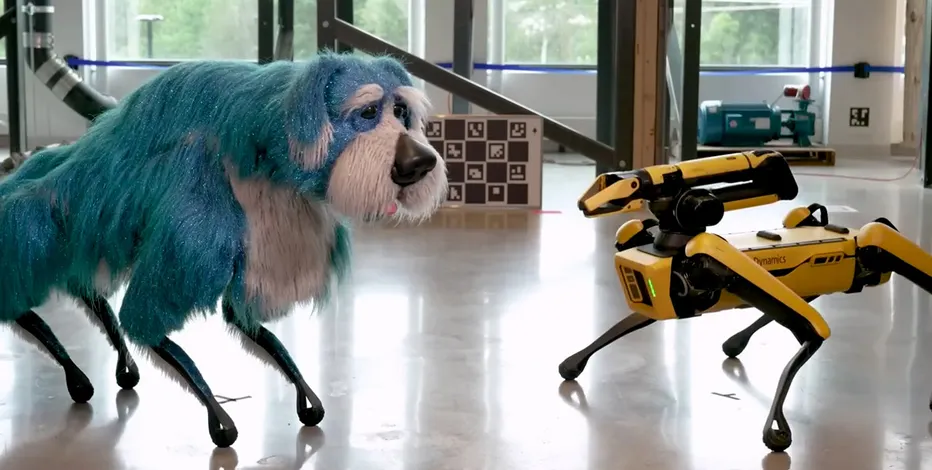In recent years, the integration of robot dogs into human society has been a fascinating journey. Initially designed for industrial and research purposes, these robotic companions are now venturing into the natural world, testing their capabilities in diverse environments. This shift marks a significant milestone in the evolution of robotics, showcasing advancements in innovation and engineering.
The Evolution of Robot Dogs
Robot dogs have come a long way since their inception. Early models were primarily used for research and development, focusing on perfecting their movement and interaction capabilities. Companies like Boston Dynamics, with their famous Spot robot, have been at the forefront of this technological evolution. Spot’s ability to navigate complex terrains and perform various tasks has set a high standard for robotic quadrupeds.
Xiaomi’s CyberDog 2, priced at $3,000, offers similar functionality to Boston Dynamics’ Spot but at a more affordable price point. This consumer-friendly design has made advanced robotics more accessible to the general public, sparking interest among robotics enthusiasts and early adopters.
Testing Nature: The Next Frontier
The latest trend in robotics involves testing robot dogs in natural environments. This move aims to evaluate their performance in real-world scenarios, pushing the boundaries of what these machines can achieve. The integration of AI and advanced sensors allows robot dogs to navigate and interact with their surroundings more effectively.
One notable example is the collaboration between Neura Robotics and Nvidia. Neura’s humanoid robot 4NE-1, showcased in a video, demonstrates the potential of combining cognitive robotics solutions with Nvidia’s advanced computing power. This partnership aims to accelerate the development of humanoid robotics, enabling these machines to perform repeatable tasks in real-world scenarios.
Ethical and Social Implications
As robot dogs become more integrated into society, ethical considerations come to the forefront. The potential replacement of real pets with robotic counterparts raises questions about the emotional and psychological impact on humans. Additionally, the deployment of robots in public spaces may lead to job displacement in certain industries, necessitating discussions around regulations and ethical guidelines.
The Role of AI in Advancing Robotics
Artificial intelligence plays a crucial role in the advancement of robot dogs. AI-powered robots can learn from their environments, adapt to new situations, and perform complex tasks with minimal human intervention. Google’s DeepMind, for instance, has developed a generative AI-powered robot navigation system that uses the Gemini 1.5 Pro model for advanced natural language understanding and navigation in office environments.
This technology has the potential to improve efficiency and automation in various settings, from offices to homes. However, it also raises concerns about job displacement and safety, especially when robots navigate shared spaces with humans.
Market Trends and Consumer Sentiment
The growing interest in consumer robotics and the increasing affordability of advanced robotic technologies have led to mixed reactions from the public. While some are excited about the potential of robot dogs and other AI-powered machines, others express concerns about ethical implications and the impact on real pets.
For instance, the introduction of robotic companion animals for the aging population, such as those produced by Ageless Innovation, has shown promise in combating loneliness. These robotic pets provide companionship and reduce loneliness for older adults, especially those unable to care for live pets. However, there are concerns about over-reliance on robots for companionship and the ethical considerations around robot attachment and potential grief.
The Future of Robot Dogs
The future of robot dogs looks promising, with continuous advancements in AI, robotics, and engineering. Companies like Tesla, with their humanoid robot Optimus, are making strides in developing robots that can perform various household tasks and engage in conversation. Although these robots are not yet ready for widespread household use, their potential to disrupt the personal robotics and home automation markets is significant.
As robot dogs and other AI-powered machines continue to evolve, it is essential to address the ethical and social implications of their integration into society. By fostering discussions around regulations and ethical guidelines, we can ensure that these technological advancements benefit humanity while minimizing potential risks.
For more insights into the advancements in robotics, check out the following articles:
- TechCrunch Minute: Beware the smiling robot with living skin
- Elon Musk’s humanoid robots are coming — But they won’t mow your lawn
- TechCrunch Minute: Boston Dynamics’s new Atlas robot shows off its push-up skills
- Neura shows off humanoid robot 4NE-1
- Xiaomi’s latest robot dog does backflips off skateboards, costs $3,000
- Watch a robot navigate the Google DeepMind offices using Gemini
- Robot cats, dogs and birds are being deployed amid an epidemic of loneliness
As we continue to explore the capabilities of robot dogs and other AI-powered machines, it is crucial to strike a balance between technological innovation and ethical considerations. By doing so, we can harness the full potential of these advancements to improve our lives and society as a whole.
Check out more AI tools.
Elevate Guest Experience with RoomGenie
Invest your money effortlessly 🚀 Try the NewsGenie tool!
